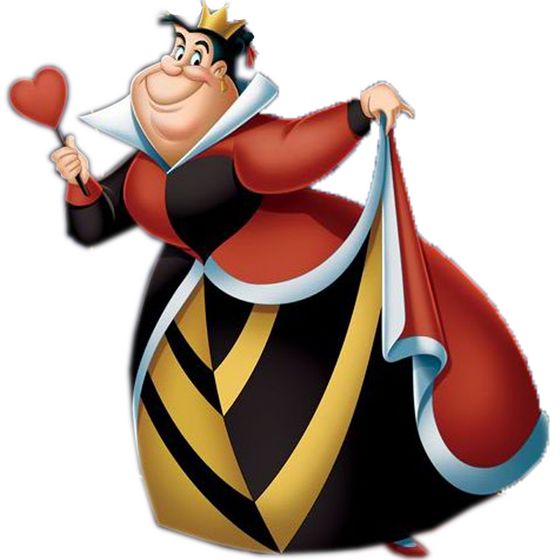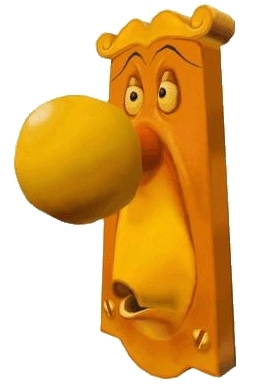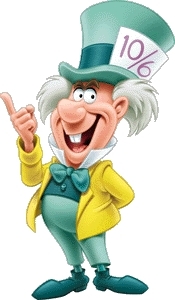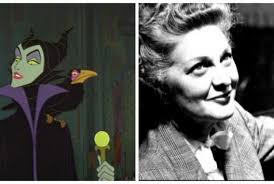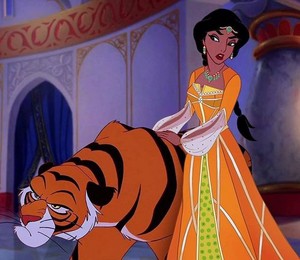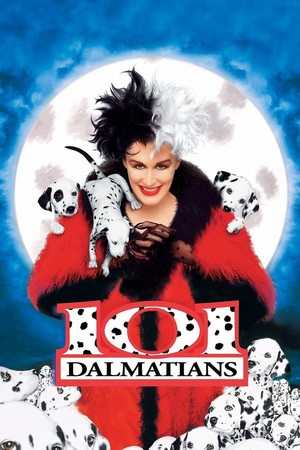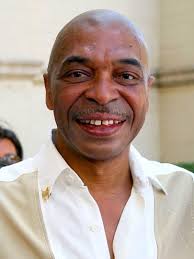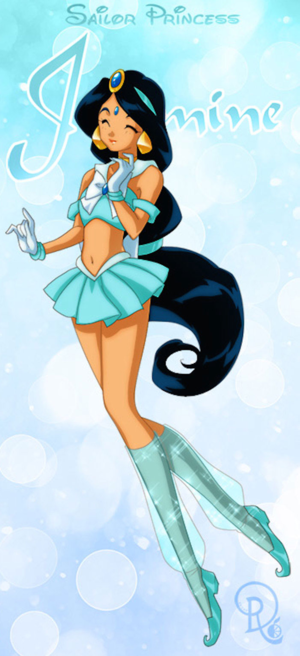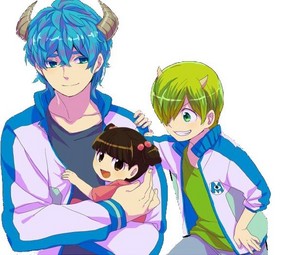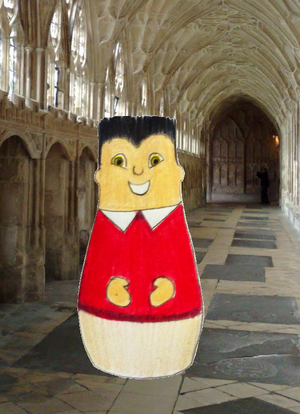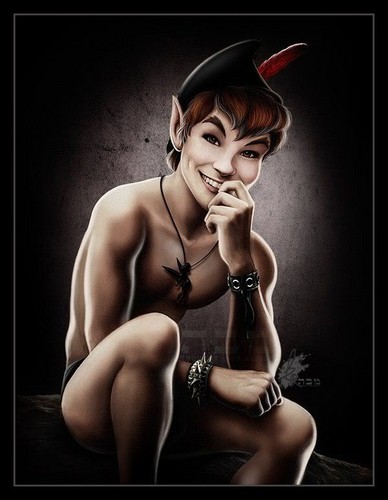Between all the 图书 I’ll tackle in this series, Alice in Wonderland (correctly Alice’s Adventures in Wonderland) is a very special case. Because, if 你 ask me: This book is not translatable and it is not adaptable. I don’t even think that the common English reader nowadays should read it without a ton of footnotes added to the original text, because it is full of in-jokes and references to a very specific time in British history. I doubt that many people even know, why the Hatter, the March 野兔 and the Cheshire Cat are mad (and if 你 don’t know either, 你 just proved my point – if 你 do, congratulations to your knowledge of English idioms and sayings). 或者 that the 老鼠, 鼠标 keeps falling asleep because she is a Dormouse. A lot in this book basically consists of a play with language (it’s a 金牌 mine for linguists, really). At one point for example Alice encounters a “school of fish” (a word play on the fact that 鱼 who are swimming together are “schooling” 或者 “shoaling”) in which the 鱼 have shorter lessons every day, because, naturally lessons have to become “less”. Any movie adaptation has to fall short, simply because it’s impossible to put this level of language play on screen – for the most part. But let’s see how 迪士尼 fared with their attempt.
1. The World of Alice
This time around, quite literally, there is no doubt that all we see is just in Alice’s mind. And what a strange mind that it. I 说 in one of my earlier reviews about Peter Pan that Neverland works on children’s logic. The Alice novels do something similar, but they are not really trying to explain the world of a child, but how a child’s mind sees the adult world with it seemingly (and sometimes really) arbitrary rules. This aspect is mostly 迷失 in the 迪士尼 movie. 你 still get a glimpse of it when Alice encounters the 皇后乐队 of Hearts, but all in all, the movie lacks the referential character of the book. It works 更多 like an experience. Instead of arbitrary rules, there are no rules at all, everything can happen. And the 动画片 underlines the bizarre character of the world we enter, especially when Alice falls down the rabbit hole. There is also a constant play with colour and darkness, with light and shadow. When the colour pops, it really pops, but this makes the darker scenes even darker.
2. The Characters
There isn’t really much to say about the characters in Wonderland. Most of them just turn up and are gone just a moment later, and really, the only truly important character is Alice. The biggest change 迪士尼 made was switching the colour of her dress from red to blue. Otherwise she is simply a curious child who explores her unfamiliar surroundings. Her reactions are, for the most part, believable, and even when they are not, this is her world, and everything which didn’t make sense at the beginning surely makes sense towards the end, when it’s revealed that this is actually a dream. In the original 图书 some aspects of the characters she meets are a little bit 更多 fleshed out, but that’s a matter of simply having a little bit 更多 room for them. The only big change occurs concerning the 皇后乐队 of Hearts. In the book it’s mentioned that her death sentences are rarely carried out (thanks to the king). The movie omits this detail, making her a much 更多 terrifying tyrant (and the king 更多 of a push-over).
3. The Plot
There isn’t one. And that’s not a criticism, there shouldn’t be one. After all, Alice in Wonderland is purposely filled with nonsense stories, so the movie shouldn’t be any different. 迪士尼 just picked what they liked the best of the whole Alice series and then edited it down to just the right length for this kind of movie – the result is quite a mixed package. Some of the segments are so short, 你 are barely have time to think about them. Like the caucus race, which could have been a commentary on politics, but is over way to fast to have a lasting impact. I doubt that many people even notice that the group walking around a rock through the tides is 唱歌 about nothing being “dryer” than a caucus race, before the conversation of the Dodo with Alice about getting dry starts.
Personally I have a love/hate relationship with the segments when she changes size. I don’t know why, but the very idea terrified me as a child. I’m fairly sure that the part when she is stuck in the house is meant to be comical, but I truly fail to see the humour in this. Though it’s nice to know that Billy the 蜥蜴 apparently survived being blown in the sky and later on became a villain in Ratigan’s gang…. But I digress. Let’s tackle some of the stand-out segments. The first which comes to mind is the story of the Walrus and the Carpenter. Mostly because it is a really strange premise that in the middle of the story Tweedledum and Tweedledee just turn up to tell another, totally unrelated story. And a really messed-up one, that is. I mean, really, the poor mother of the poor little oysters. In the book the (slightly different) story results in Alice trying to determine, who was worse, the Walrus 或者 the Carpenter, but whenever she comes to a conclusion Tweedeldum and Tweedeldee reveal another detail about them which makes her change her mind.
Then there is the caterpillar. This was always my favourite segment, even though it really loses in the translation. Now, from the eyes of an adult (and knowing the original), I can appreciate it even more. I think this is the part which captures the book the best, because it translates the word-plays on screen, quite literally. What everyone remembers is naturally the mad tea-party. What can I say about it aside from it being utterly nonsensical? And the song about the unbirthday is one of three stand-out songs. None of the countless songs in this movie are bad 由 any stretch of imagination, but they all are very short and very 1950s. If someone starts 唱歌 the tune, 你 will remember them, but I doubt that anyone would remember the songs without prompting. The exceptions are “All in the golden Afternoon”, “The Unbirthday Song” and “Painting the 玫瑰 red”.
Speaking of which: Alice meeting the 皇后乐队 of Hearts is naturally the last stand-out segment, and the longest. In a way, the movie has a shift in direction when Alice is alone in the woods. Not only is it a very sad scene, it’s the moment the movie stops being so directionless. Up to this point Alice was simple following the White Rabbit. She was just experiencing Wonderland. Now she decides that she wants to go 首页 and follows the 建议 of the Cheshire Cat to apply to the 皇后乐队 of Hearts for a way home. For the first time, her actions have a purpose, and while the plot still makes some unexpected twists, from then on the segments are no longer interchangeable. 迪士尼 also made the situation way 更多 dangerous than in the book. There it’s not Alice who is on trial, she is just one of the witnesses, she doesn’t shrink again and there is chase scene, she simply wakes up. But I guess even a nonsensical movie needs some sort of climax.
4. Conclusion
If 你 have read my 文章 about link, 你 might know that I’m not really a 粉丝 of “Alice down the Rabbit hole” stories, I prefer character development and a plot which makes sense in a world which rules I understand. But that doesn’t mean that this isn’t an interesting approach to story-telling, 或者 that I can’t appreciate the 动画片 and creativity which went into this movie. The animators made an effort to keep the linguistic aspects in the movie whenever possible, and while I wish they had done 更多 in this direction, especially in the lyrics, what is there is fairly enjoyable. Nevertheless, the movie misses the Meta aspect which makes the book special. But then, this is true for all adaptations I know.
Like I said, I don’t think that the book is adaptable. But of the adaptions out there, Disney’s might be the best, despite the fact that allegedly Walt 迪士尼 himself didn’t really like the movie either. He 说 that it had no heart. But what it does have is a sense for the nonsensical. Too many adaptations try to change the story into a cohesive plot, but that’s simply not what this story is about. If it does have a deeper meaning, you’ll find it in the Meta which mostly refers to a reality too far in the past, to be fully understood nowadays. This in mind, Disney’s “let’s see which animator can come up with the strangest scene” approach does the material 更多 justice, than any other take I’ve seen so far.
1. The World of Alice
This time around, quite literally, there is no doubt that all we see is just in Alice’s mind. And what a strange mind that it. I 说 in one of my earlier reviews about Peter Pan that Neverland works on children’s logic. The Alice novels do something similar, but they are not really trying to explain the world of a child, but how a child’s mind sees the adult world with it seemingly (and sometimes really) arbitrary rules. This aspect is mostly 迷失 in the 迪士尼 movie. 你 still get a glimpse of it when Alice encounters the 皇后乐队 of Hearts, but all in all, the movie lacks the referential character of the book. It works 更多 like an experience. Instead of arbitrary rules, there are no rules at all, everything can happen. And the 动画片 underlines the bizarre character of the world we enter, especially when Alice falls down the rabbit hole. There is also a constant play with colour and darkness, with light and shadow. When the colour pops, it really pops, but this makes the darker scenes even darker.
2. The Characters
There isn’t really much to say about the characters in Wonderland. Most of them just turn up and are gone just a moment later, and really, the only truly important character is Alice. The biggest change 迪士尼 made was switching the colour of her dress from red to blue. Otherwise she is simply a curious child who explores her unfamiliar surroundings. Her reactions are, for the most part, believable, and even when they are not, this is her world, and everything which didn’t make sense at the beginning surely makes sense towards the end, when it’s revealed that this is actually a dream. In the original 图书 some aspects of the characters she meets are a little bit 更多 fleshed out, but that’s a matter of simply having a little bit 更多 room for them. The only big change occurs concerning the 皇后乐队 of Hearts. In the book it’s mentioned that her death sentences are rarely carried out (thanks to the king). The movie omits this detail, making her a much 更多 terrifying tyrant (and the king 更多 of a push-over).
3. The Plot
There isn’t one. And that’s not a criticism, there shouldn’t be one. After all, Alice in Wonderland is purposely filled with nonsense stories, so the movie shouldn’t be any different. 迪士尼 just picked what they liked the best of the whole Alice series and then edited it down to just the right length for this kind of movie – the result is quite a mixed package. Some of the segments are so short, 你 are barely have time to think about them. Like the caucus race, which could have been a commentary on politics, but is over way to fast to have a lasting impact. I doubt that many people even notice that the group walking around a rock through the tides is 唱歌 about nothing being “dryer” than a caucus race, before the conversation of the Dodo with Alice about getting dry starts.
Personally I have a love/hate relationship with the segments when she changes size. I don’t know why, but the very idea terrified me as a child. I’m fairly sure that the part when she is stuck in the house is meant to be comical, but I truly fail to see the humour in this. Though it’s nice to know that Billy the 蜥蜴 apparently survived being blown in the sky and later on became a villain in Ratigan’s gang…. But I digress. Let’s tackle some of the stand-out segments. The first which comes to mind is the story of the Walrus and the Carpenter. Mostly because it is a really strange premise that in the middle of the story Tweedledum and Tweedledee just turn up to tell another, totally unrelated story. And a really messed-up one, that is. I mean, really, the poor mother of the poor little oysters. In the book the (slightly different) story results in Alice trying to determine, who was worse, the Walrus 或者 the Carpenter, but whenever she comes to a conclusion Tweedeldum and Tweedeldee reveal another detail about them which makes her change her mind.
Then there is the caterpillar. This was always my favourite segment, even though it really loses in the translation. Now, from the eyes of an adult (and knowing the original), I can appreciate it even more. I think this is the part which captures the book the best, because it translates the word-plays on screen, quite literally. What everyone remembers is naturally the mad tea-party. What can I say about it aside from it being utterly nonsensical? And the song about the unbirthday is one of three stand-out songs. None of the countless songs in this movie are bad 由 any stretch of imagination, but they all are very short and very 1950s. If someone starts 唱歌 the tune, 你 will remember them, but I doubt that anyone would remember the songs without prompting. The exceptions are “All in the golden Afternoon”, “The Unbirthday Song” and “Painting the 玫瑰 red”.
Speaking of which: Alice meeting the 皇后乐队 of Hearts is naturally the last stand-out segment, and the longest. In a way, the movie has a shift in direction when Alice is alone in the woods. Not only is it a very sad scene, it’s the moment the movie stops being so directionless. Up to this point Alice was simple following the White Rabbit. She was just experiencing Wonderland. Now she decides that she wants to go 首页 and follows the 建议 of the Cheshire Cat to apply to the 皇后乐队 of Hearts for a way home. For the first time, her actions have a purpose, and while the plot still makes some unexpected twists, from then on the segments are no longer interchangeable. 迪士尼 also made the situation way 更多 dangerous than in the book. There it’s not Alice who is on trial, she is just one of the witnesses, she doesn’t shrink again and there is chase scene, she simply wakes up. But I guess even a nonsensical movie needs some sort of climax.
4. Conclusion
If 你 have read my 文章 about link, 你 might know that I’m not really a 粉丝 of “Alice down the Rabbit hole” stories, I prefer character development and a plot which makes sense in a world which rules I understand. But that doesn’t mean that this isn’t an interesting approach to story-telling, 或者 that I can’t appreciate the 动画片 and creativity which went into this movie. The animators made an effort to keep the linguistic aspects in the movie whenever possible, and while I wish they had done 更多 in this direction, especially in the lyrics, what is there is fairly enjoyable. Nevertheless, the movie misses the Meta aspect which makes the book special. But then, this is true for all adaptations I know.
Like I said, I don’t think that the book is adaptable. But of the adaptions out there, Disney’s might be the best, despite the fact that allegedly Walt 迪士尼 himself didn’t really like the movie either. He 说 that it had no heart. But what it does have is a sense for the nonsensical. Too many adaptations try to change the story into a cohesive plot, but that’s simply not what this story is about. If it does have a deeper meaning, you’ll find it in the Meta which mostly refers to a reality too far in the past, to be fully understood nowadays. This in mind, Disney’s “let’s see which animator can come up with the strangest scene” approach does the material 更多 justice, than any other take I’ve seen so far.



